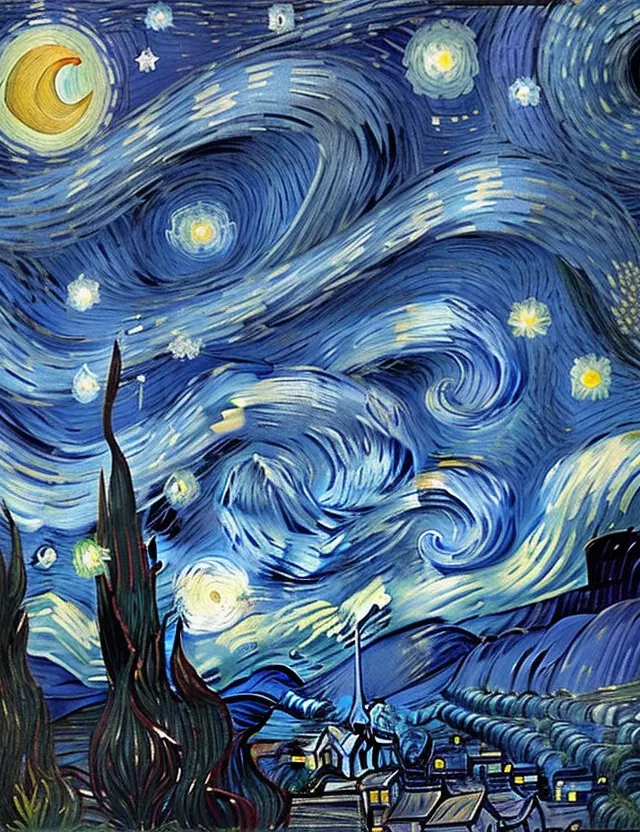Completion of Vincent van Gogh's 'Starry Night': A Masterpiece of Post-Impressionist Art
Exploring the Iconic Painting's Creation

Completion of Vincent van Gogh's 'Starry Night': A Masterpiece of Post-Impressionist Art
In March 1889, Vincent van Gogh, the Dutch post-impressionist painter, completed one of his most celebrated works, 'Starry Night.' This iconic painting, with its swirling sky and vibrant colors, has since become synonymous with van Gogh's unique artistic style and emotional intensity.
A Visionary Work
'Starry Night' is a testament to van Gogh's bold experimentation with color, texture, and form. The painting depicts a tranquil night scene over the village of Saint-Rémy-de-Provence, where van Gogh resided in a psychiatric hospital at the time. Despite his struggles with mental illness, van Gogh found solace and inspiration in the beauty of the natural world.
Symbolism and Interpretation
The swirling patterns and expressive brushstrokes in 'Starry Night' evoke a sense of movement and dynamism, while the brilliant hues of blue and yellow create a dreamlike atmosphere. Interpretations of the painting vary, with some seeing it as a reflection of van Gogh's inner turmoil and others as a celebration of the mysteries of the cosmos.
Enduring Legacy
'Starry Night' has captivated audiences for generations, earning its place as one of the most iconic works of art in history. Its influence extends far beyond the realm of visual art, inspiring poets, musicians, and writers with its transcendent beauty and emotional power.
Celebrating an Icon
As we commemorate the completion of Vincent van Gogh's 'Starry Night,' we celebrate not only the artist's extraordinary talent but also the enduring legacy of a painting that continues to inspire wonder and awe in all who behold it.



